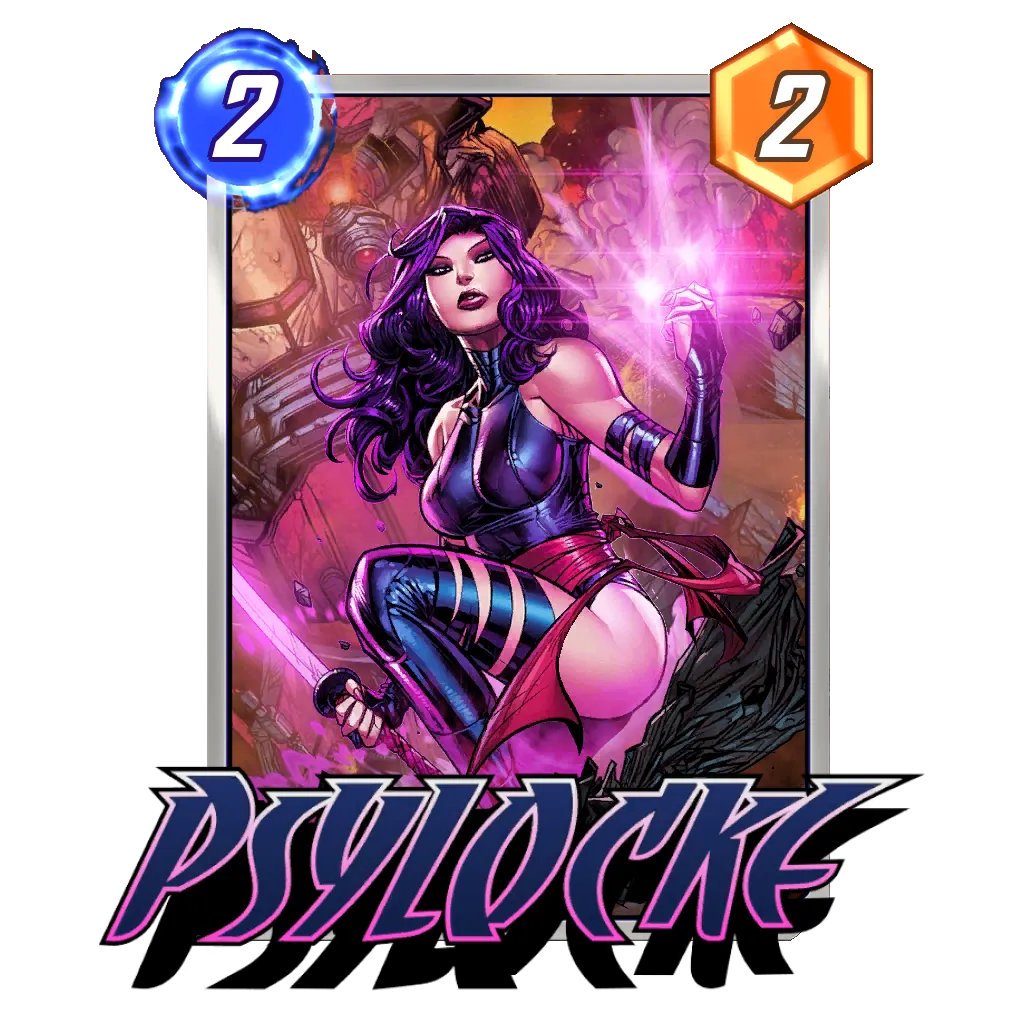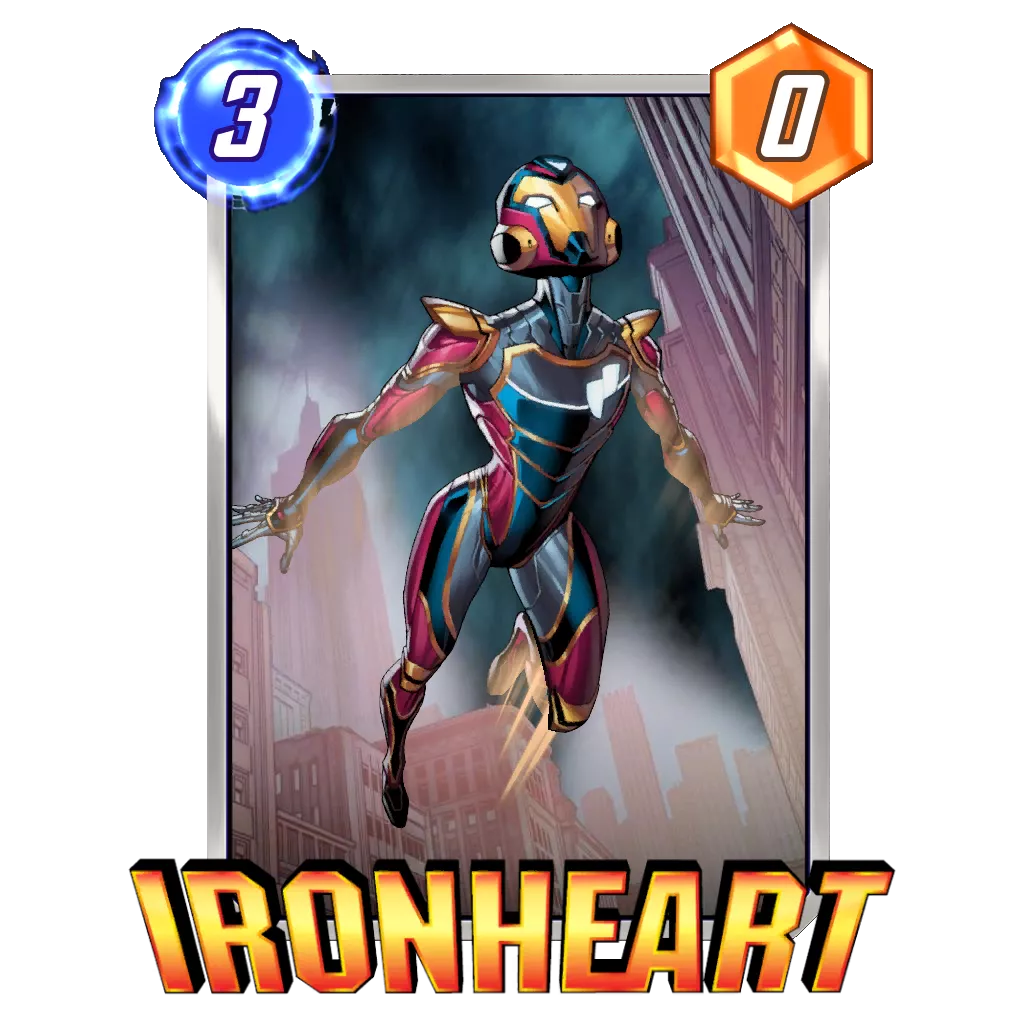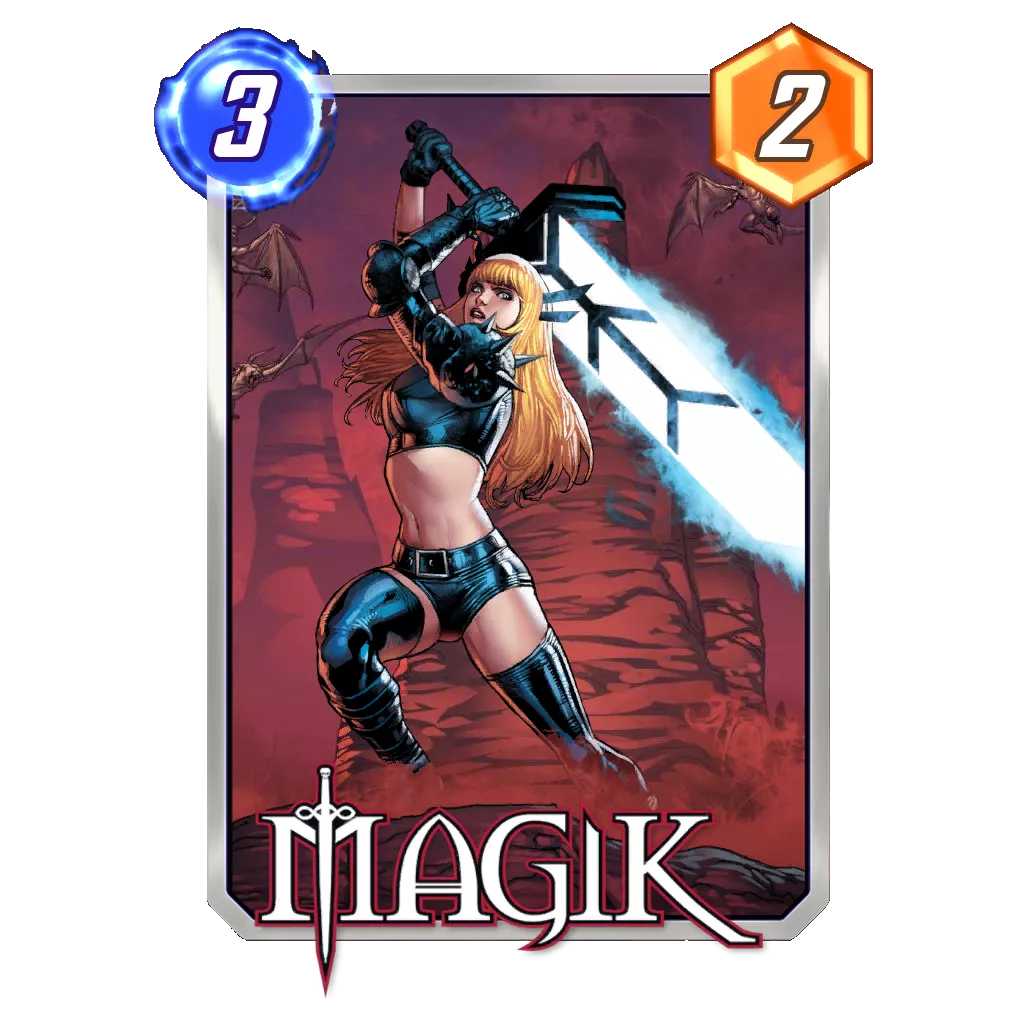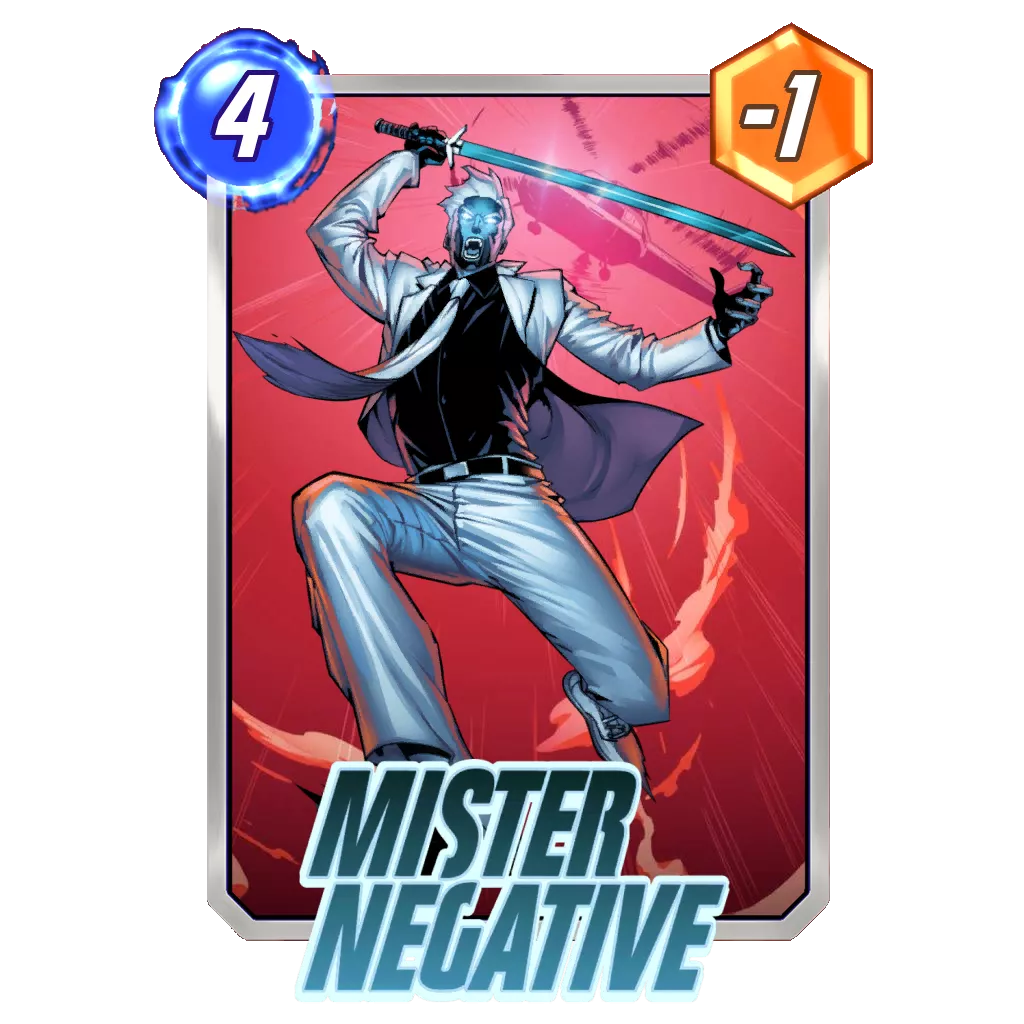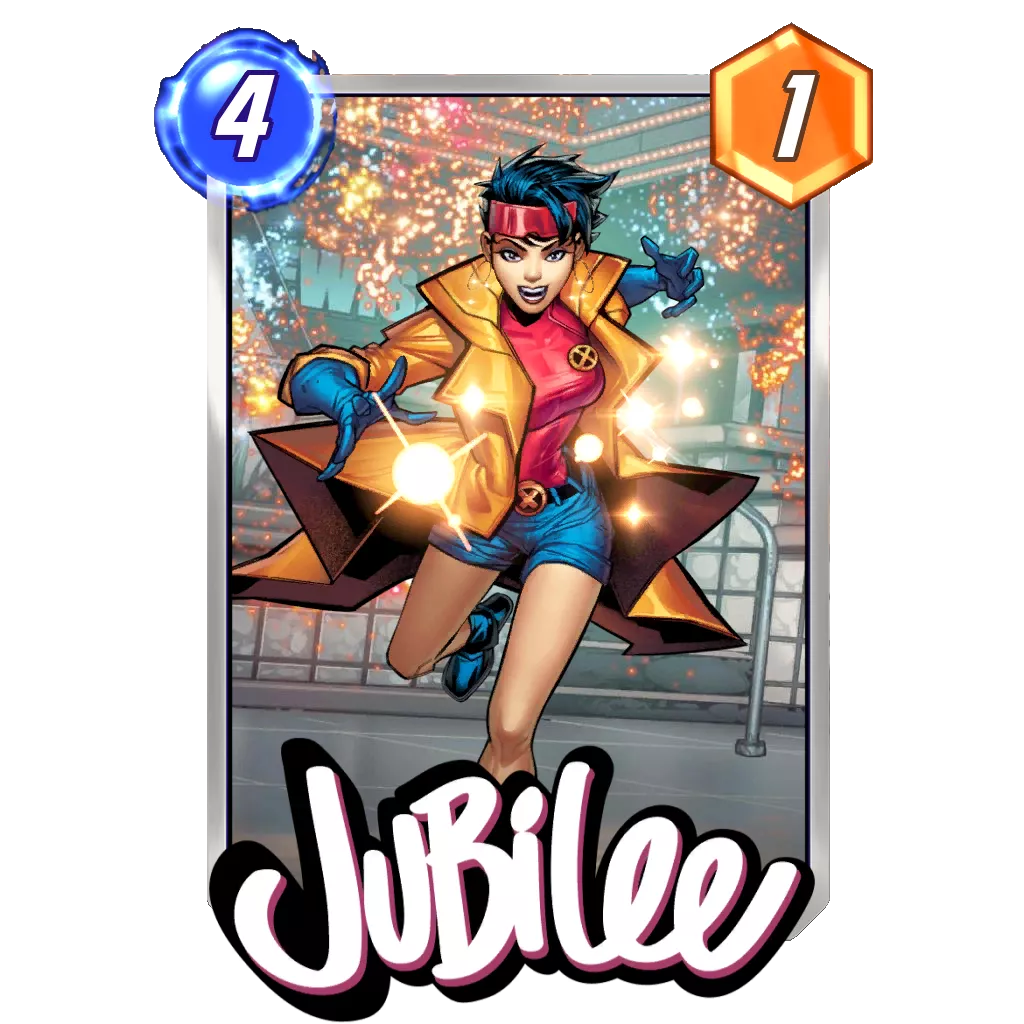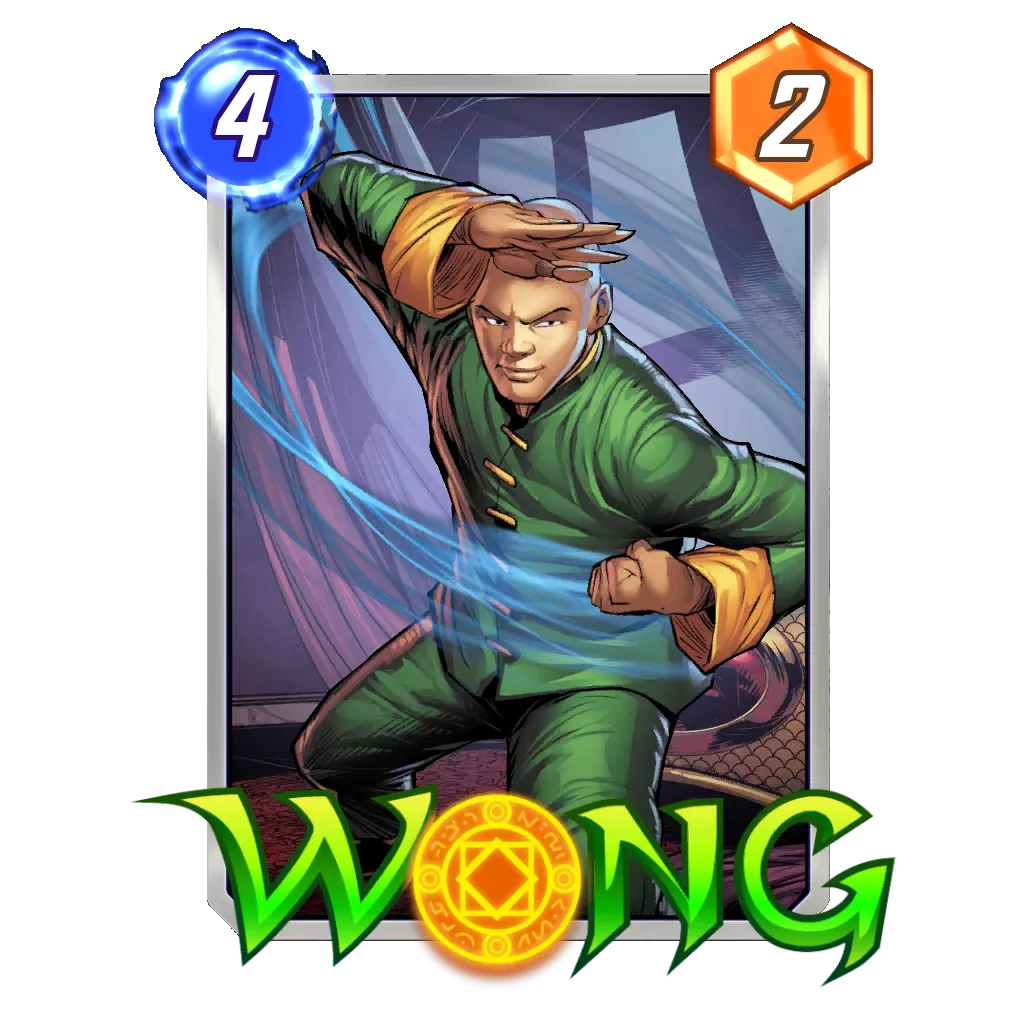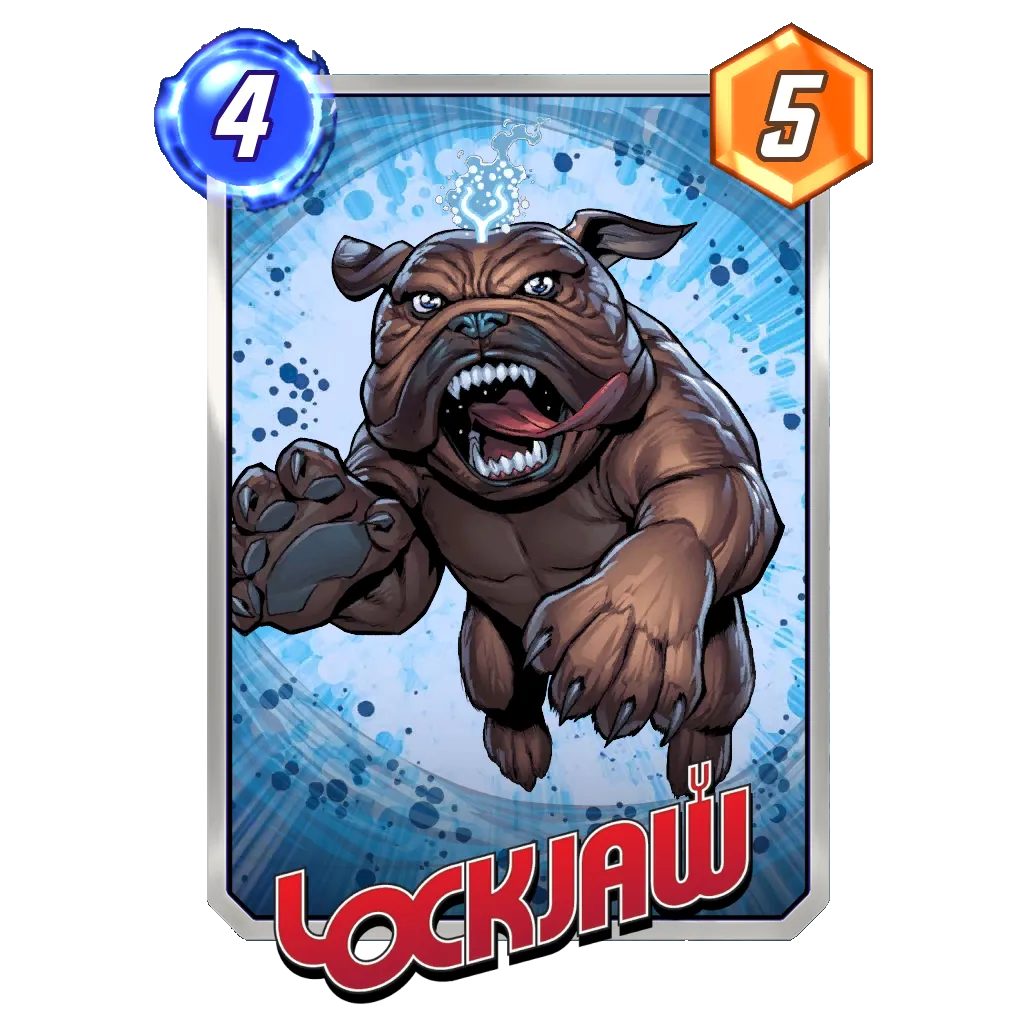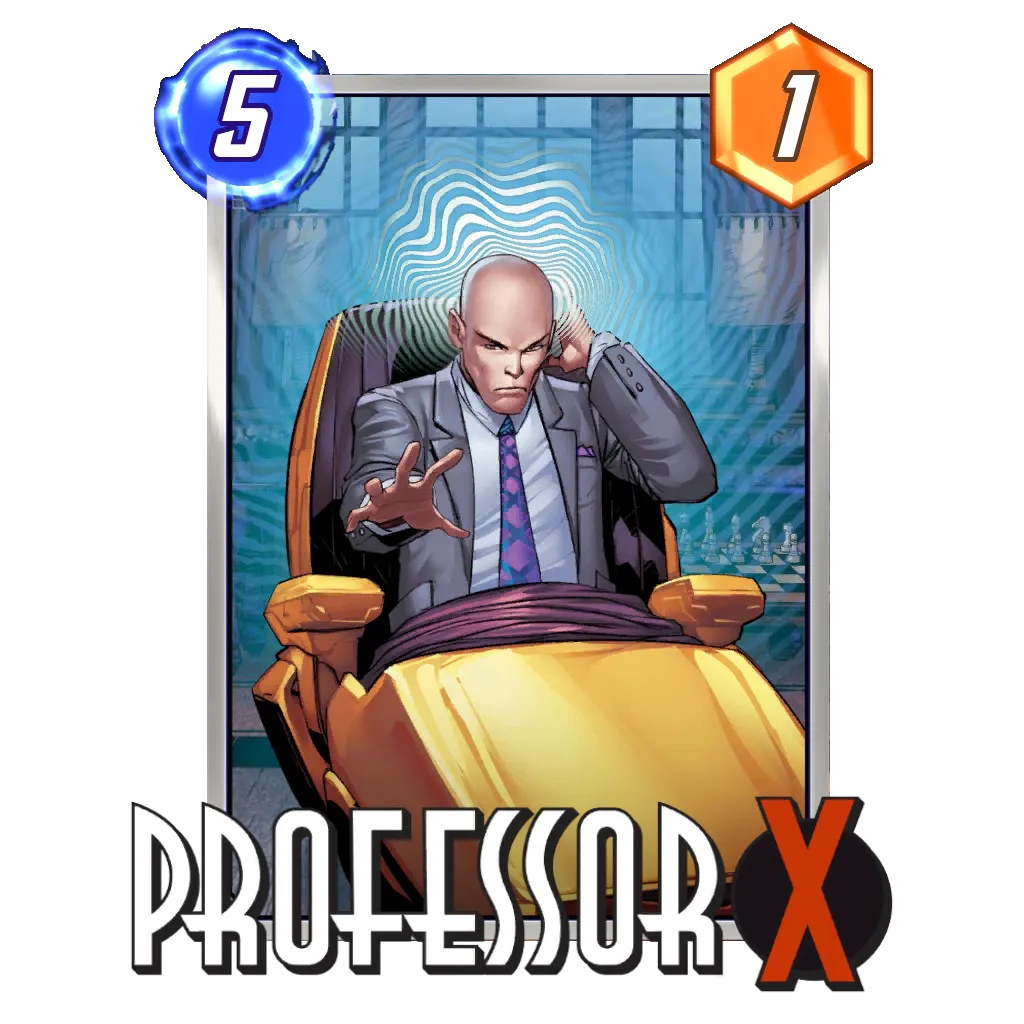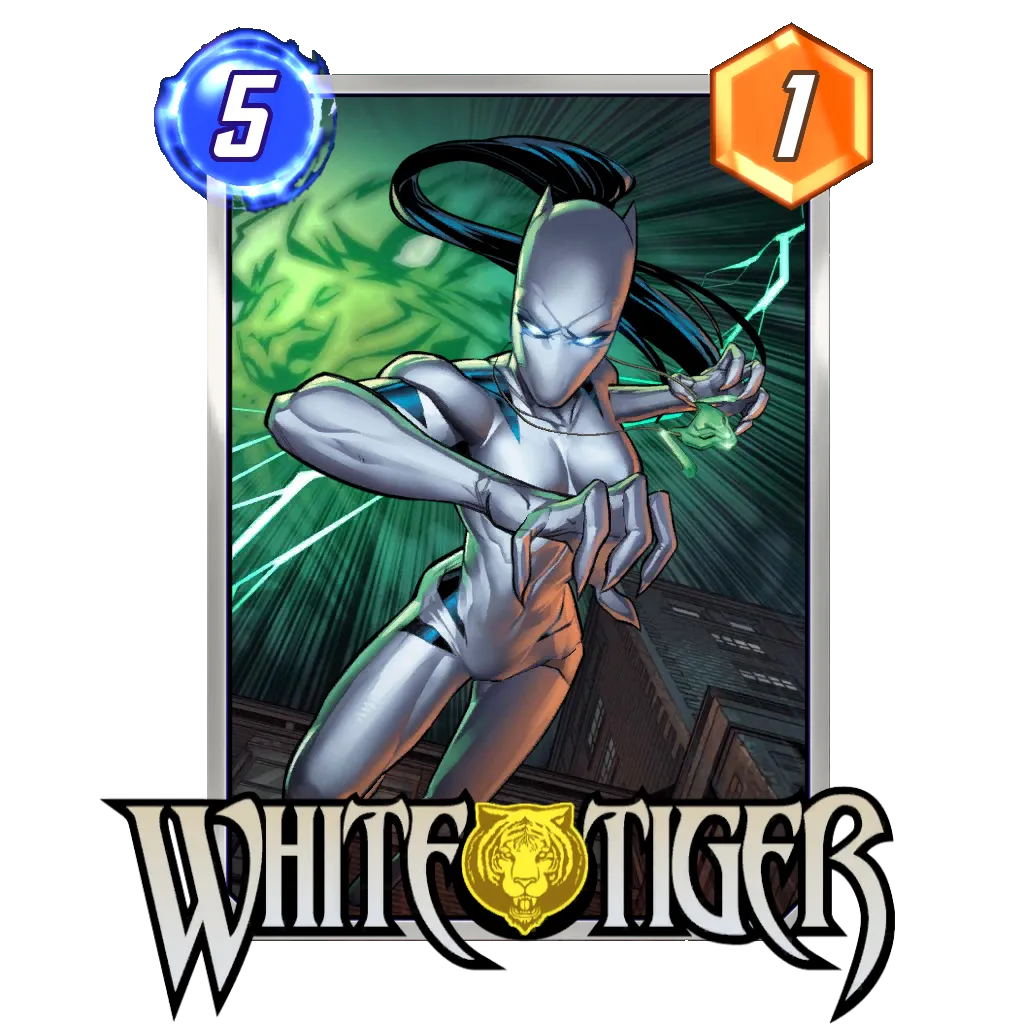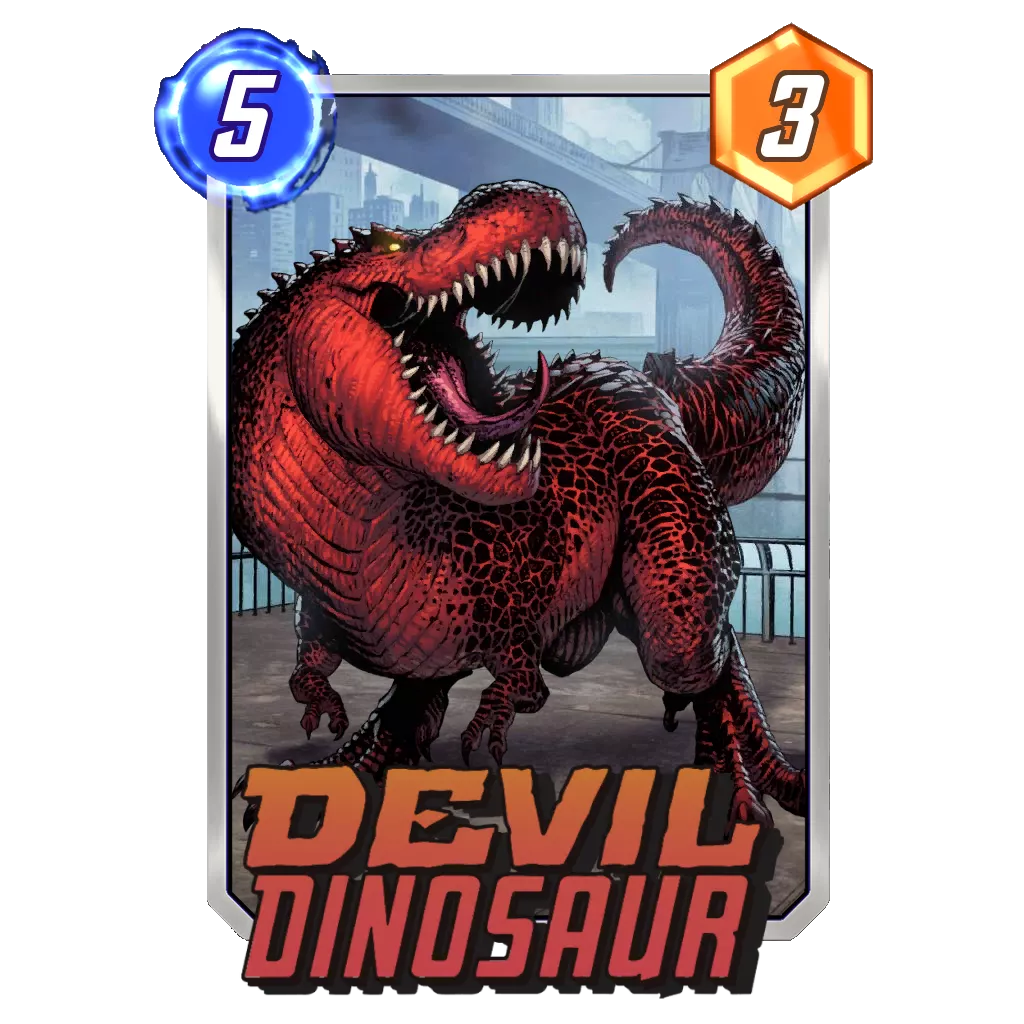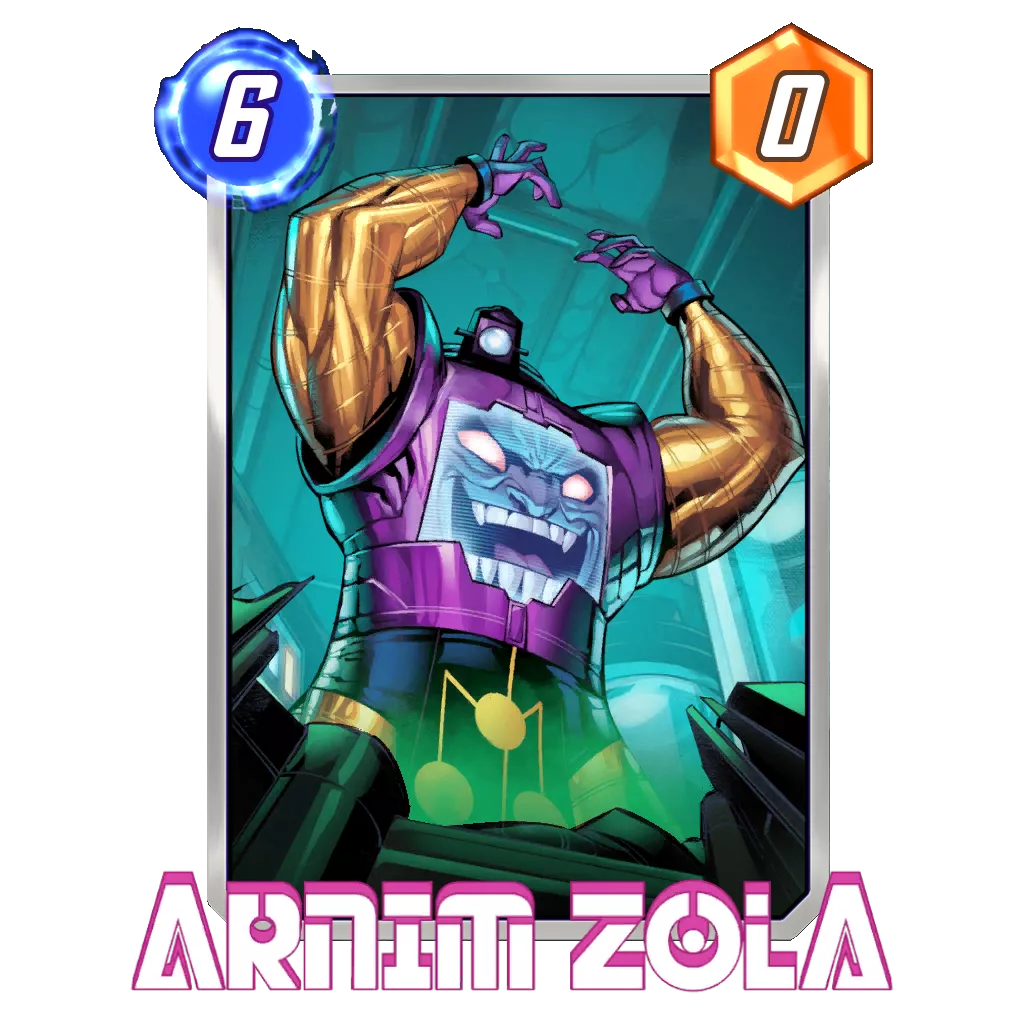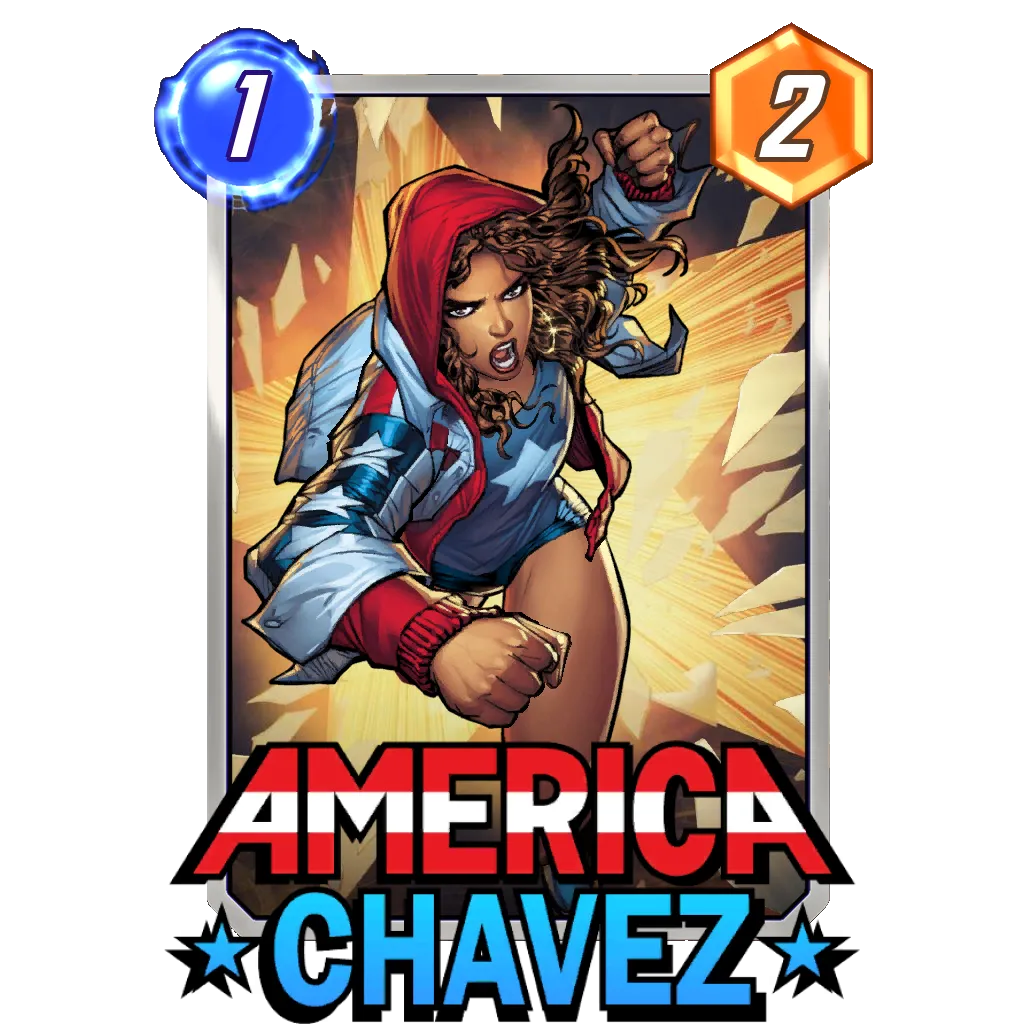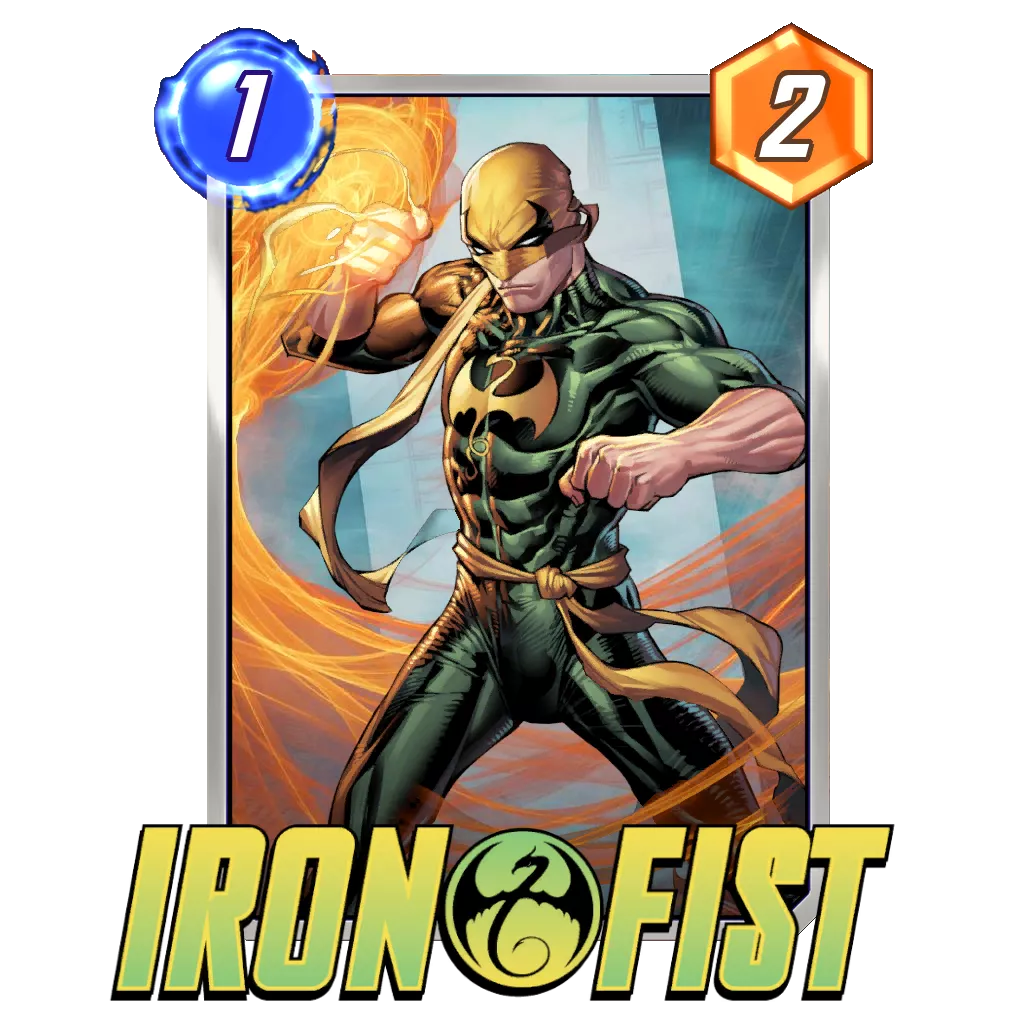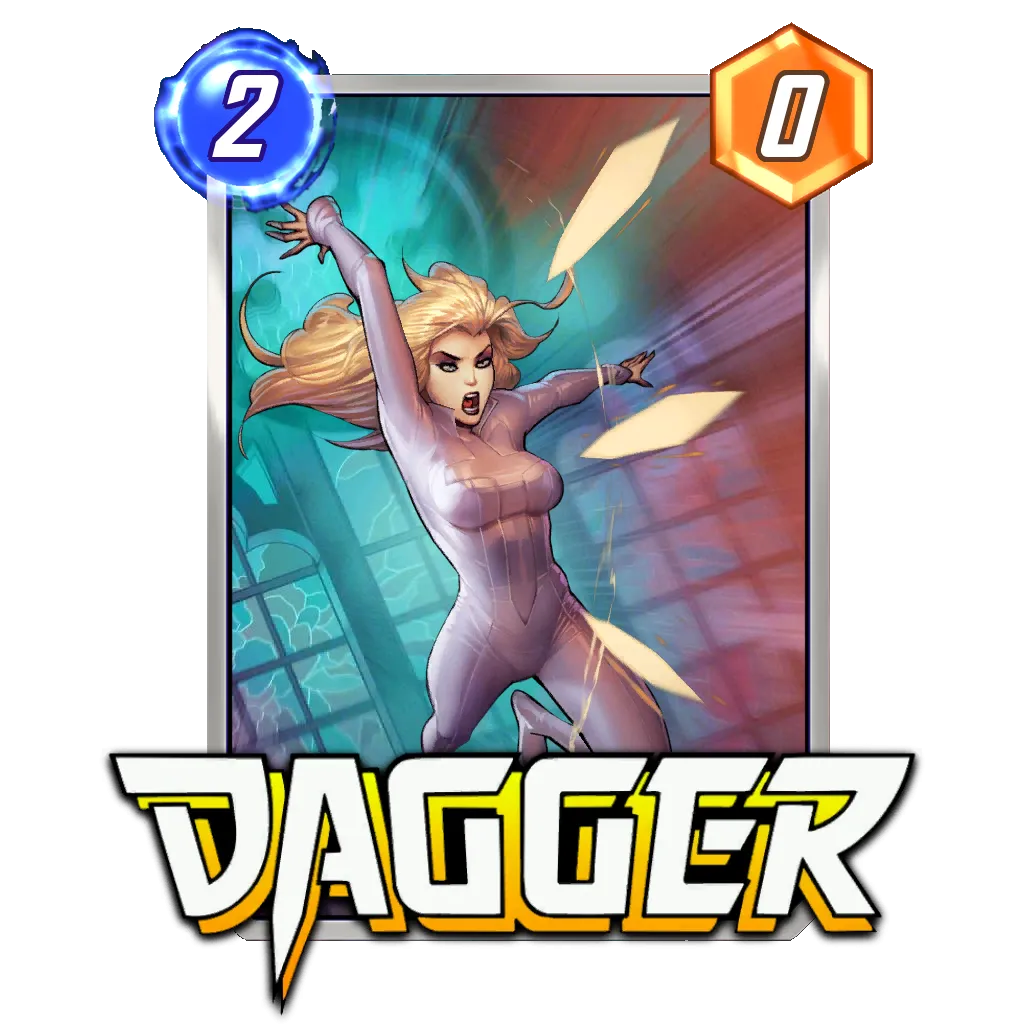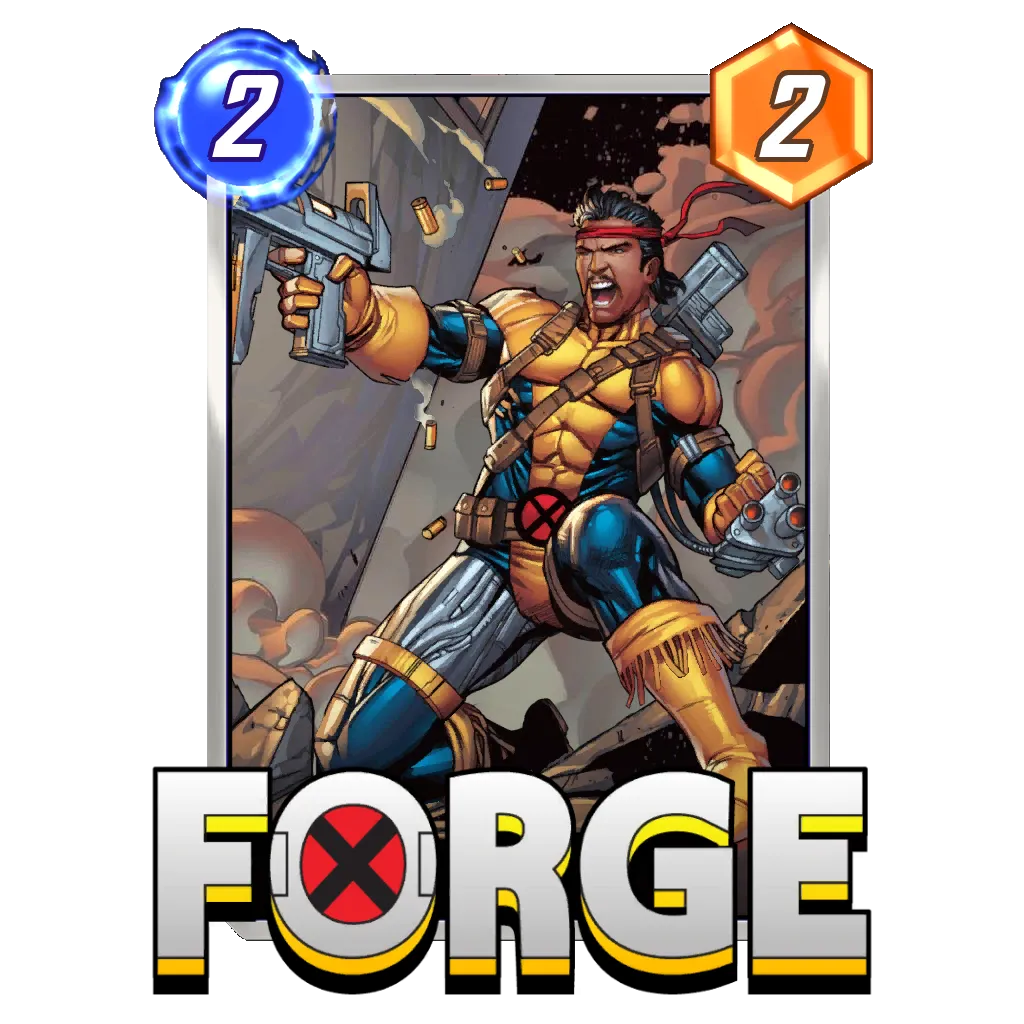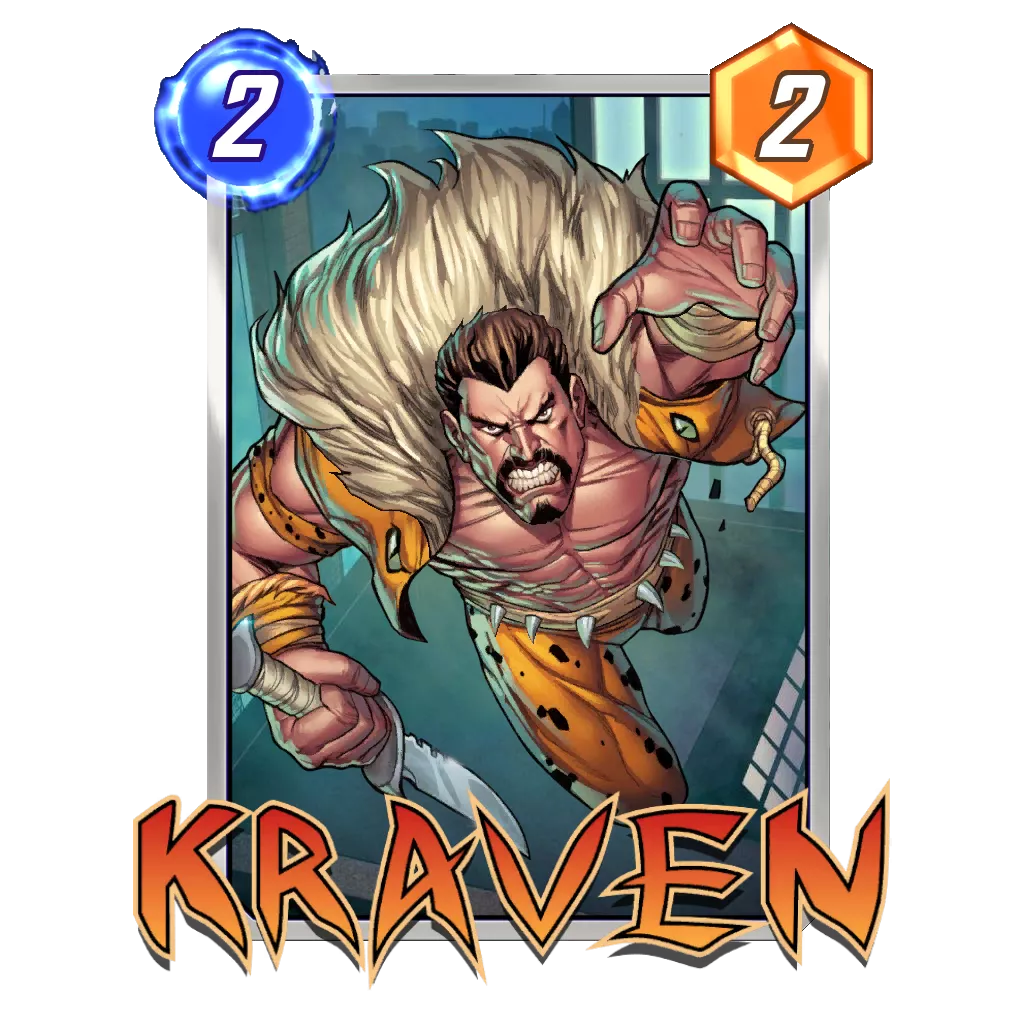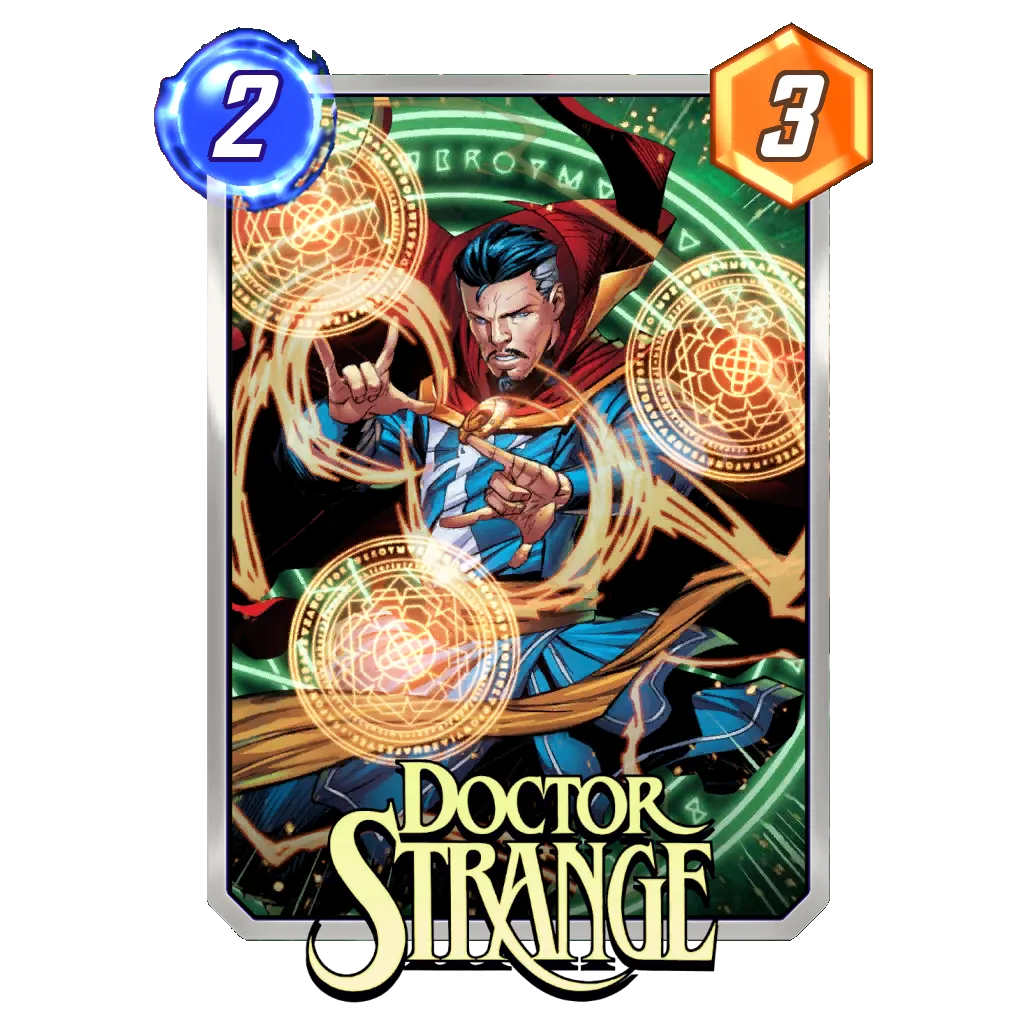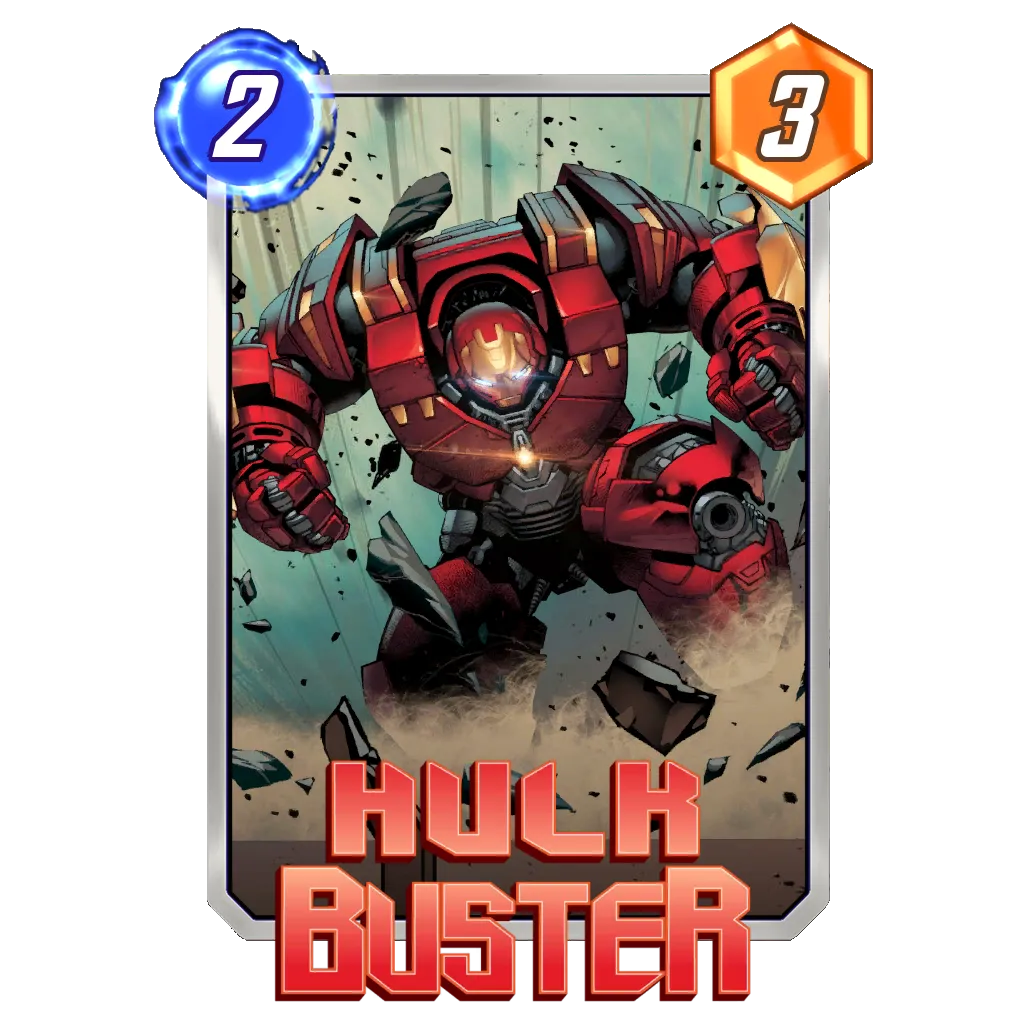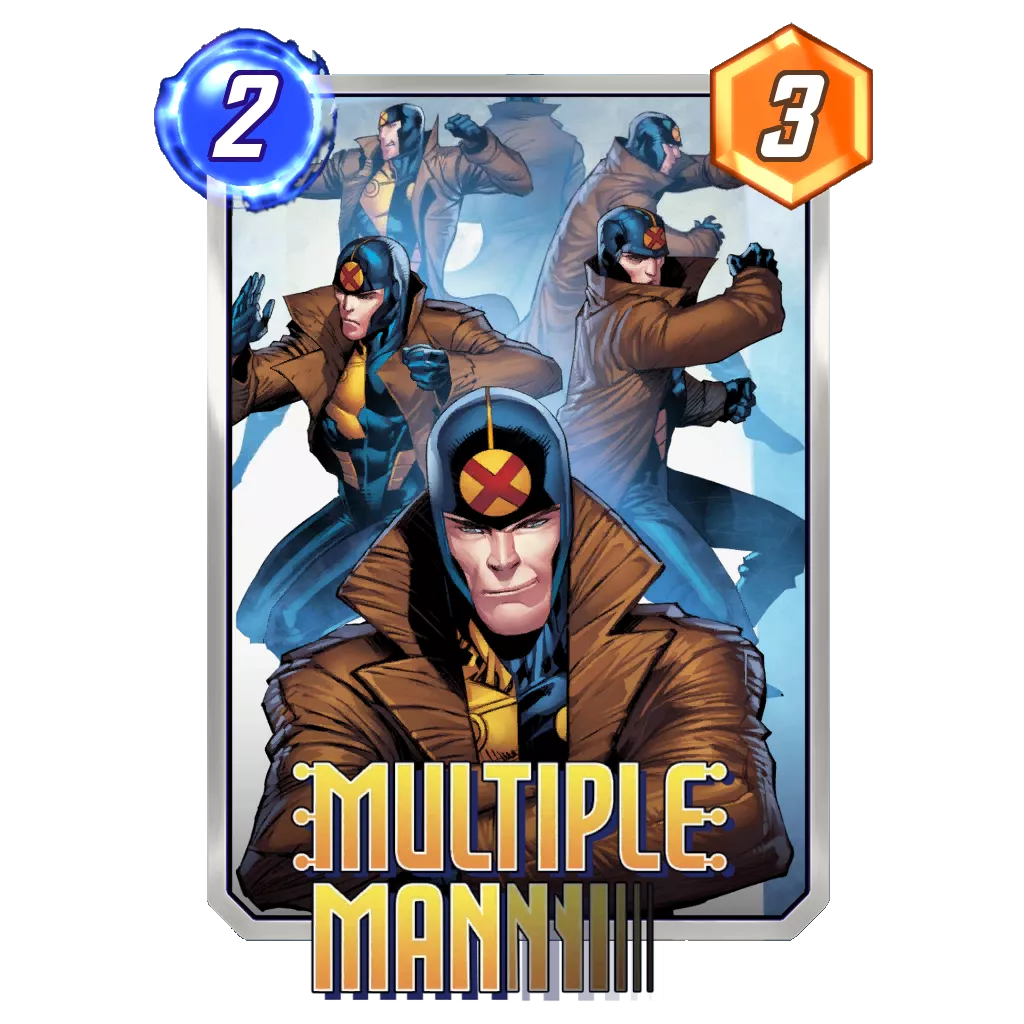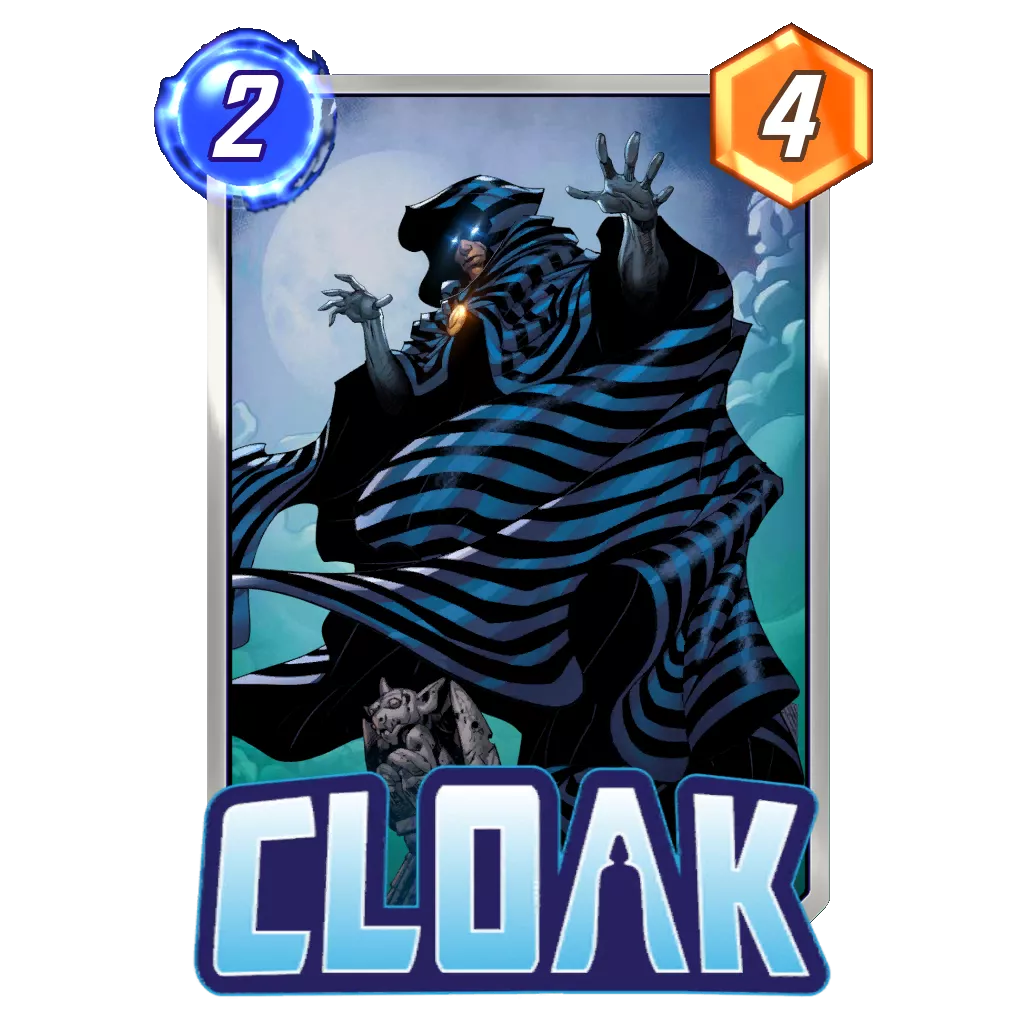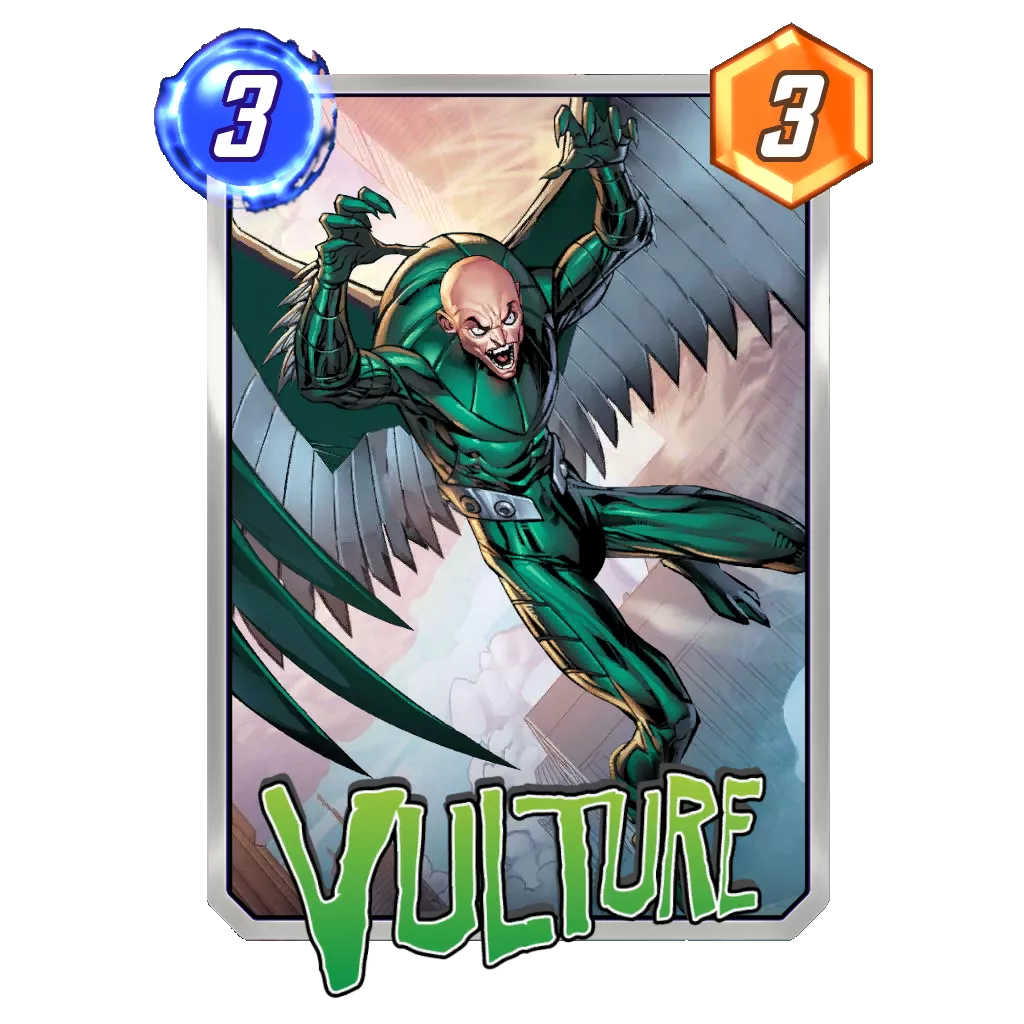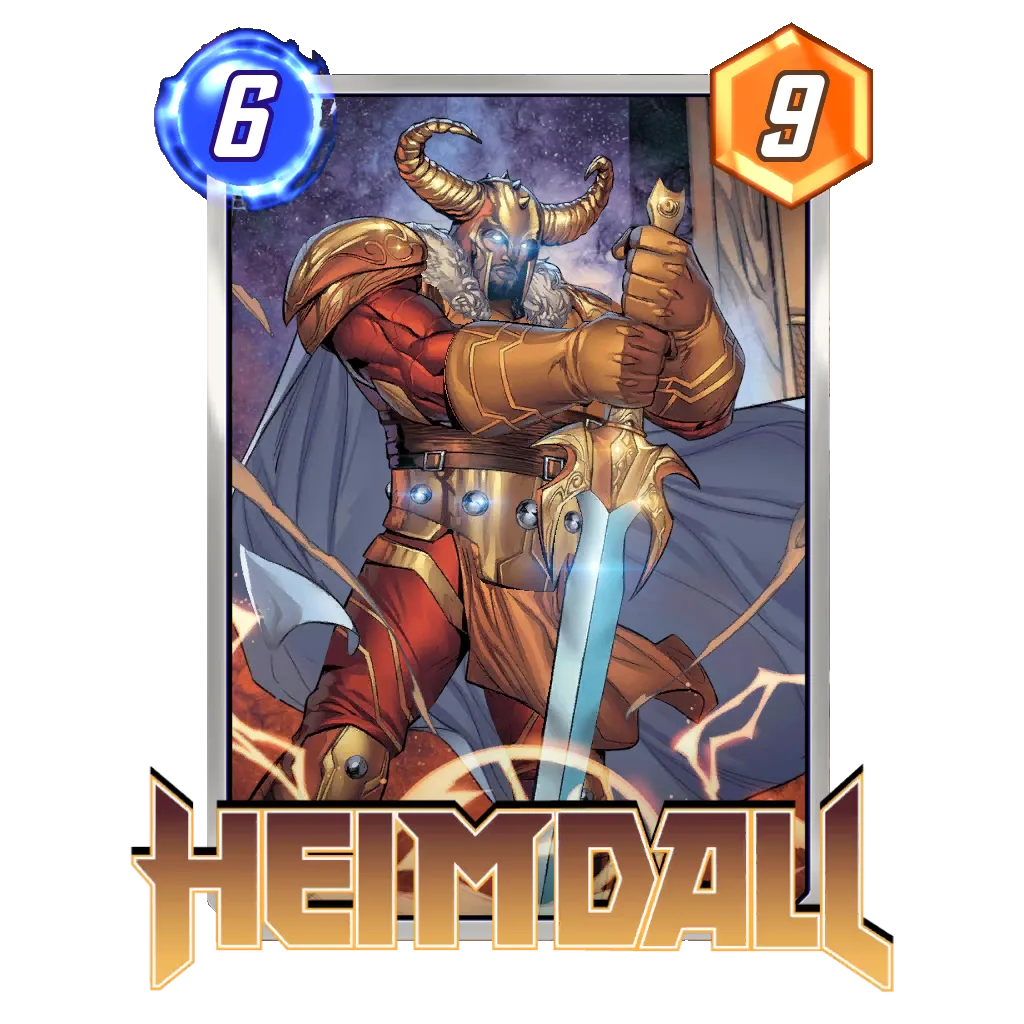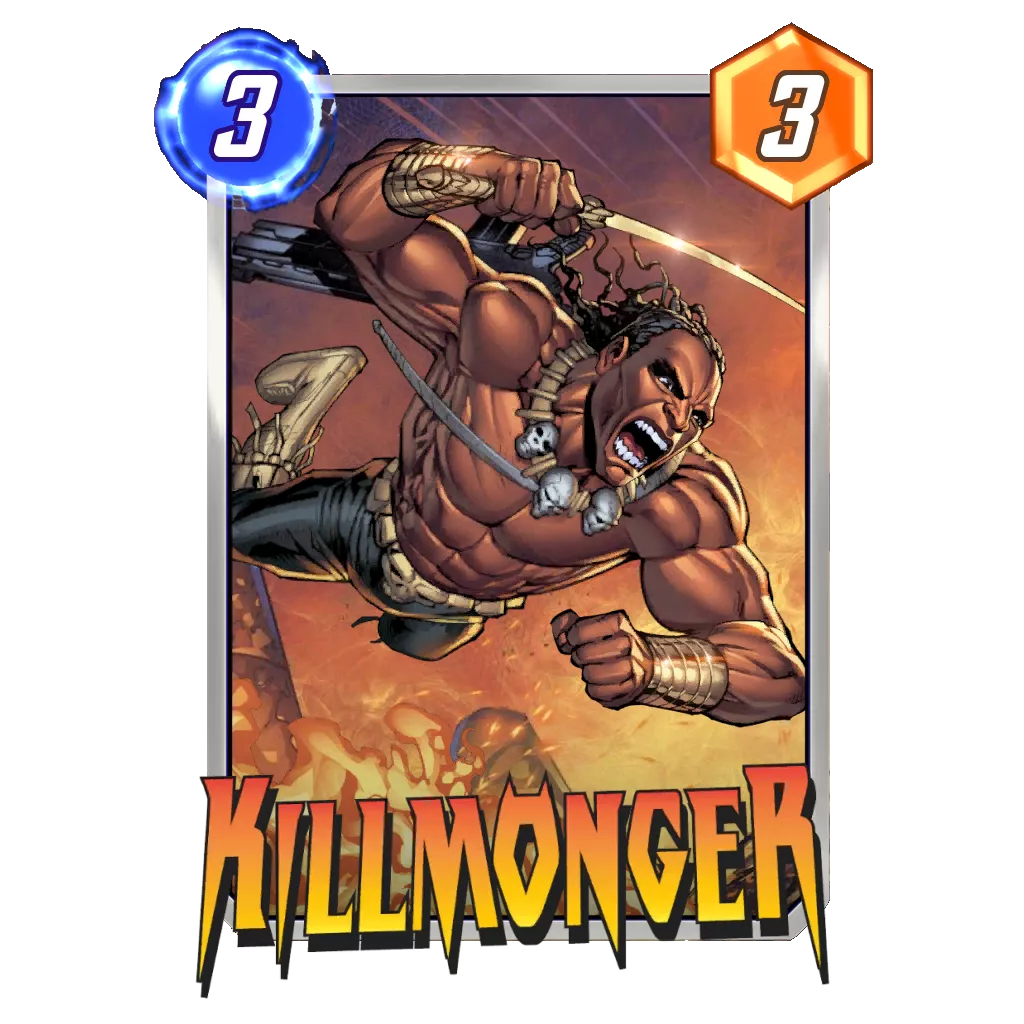Table of Contents
Introduction

Marvel Snap is an unique game compared to other digital card games currently on the market. Most of the popular games currently have a ladder system where posting an above 50% win rate is the way for players to climb. Marvel Snap is completely different in that regard, as one could climb the ladder even with a 15% win rate if they master the namesake signature feature of the game: Snapping.
Similarly to a Poker game, Snapping will raise the stakes of the game you are playing, doubling the number of Cubes you earn on the line for this game. If one player Snaps, the stakes will raise to 4 cubes instead of 2 at the start of next turn, if both do so, 8 Cubes will be awarded to the eventual winner. In order to balance out this feature, players can also Retreat from the game, and only lose the current amount of Cubes in the pool. If nobody Snapped, you will usually get away with losing one cube when retreating.
In this guide, I’d like to explore these 2 key aspects of optimizing your ladder rank climb on Marvel Snap: When to Snap and when to retreat. There is a lot to cover in order to maximize these two major aspects of the game, but I feel they are essential to Marvel Snap’s success in the long run. Indeed, by being able to win much more Cubes at once, gimmicky “jank” decks have a chance at representing viable climbing options in Marvel Snap, while they are only considered good for daily content in other card games. The surprise element is a big factor in order to bluff your opponent into raising the stakes, and then punishing them for doing so.
So without further ado, let’s dive deep into one of Marvel Snap’s most important skill for racking up your Cubes: Snapping.
Why Would Someone Snap?
1. The Obvious Snap
A vast majority of the time, a player will Snap because they believe the game is a sure-fire win. They are largely ahead on board, their opponent missed a significant step in their gameplan or a location that happens to be the perfect one for our deck has been revealed. These go-to Snaps usually come from a situation most people could say, “Oh yeah, this player is going to win it”. In that case, we will commit what can be called an “obvious” Snap, in the sense that most people will Snap in that scenario, as a way to get more Cubes.
The tricky part of an obvious Snap is the information it gives to the other player. Indeed, when something happens and your opponent immediately Snaps, it isn’t so hard to imagine they are clearly happy about the outcome of that random event. As such, these obvious Snaps can often be met with a retreat before the Cubes count goes up. An obvious Snap should then be disguised a bit, either not snapping at the exact time we get excited because we got a nice roll. Or maybe waiting a turn, so the opponent could have missed the element we are snapping for.
Because of the possibility our opponent could retreat if they understand how good we are looking for the rest of the game, some people tend to hold their Snap. They argue the 2 Cubes at the end of the game are worth more than the 1 right now. Personally, I would always Snap early in a game I know I’m heavily favored, the worst outcome being to just queue another game and getting a Cube for my trouble while I only played a couple of turns. As the game progresses and I invested more time into it, I might be tempted to just take the win at 2 Cubes instead of getting only 1 Cube while I played 5 out of 6 turns of that game.
Example: The Bifrost is revealed, and you are playing a Move ability deck. Then, you could just immediately Snap, and if the opponent retreats, you only spent a maximum of 2 or 3 turns into that game, so it’s fine. If they don’t, you have a huge power play on turn 4.
2. The “Good Hand” Snap
Differently to the Obvious Snap, this time we are motivated by something we can see ourselves, but our opponent cannot. In that scenario, Snapping will likely tell our opponent that we are feeling good about this game, but they can only guess why, and could also believe we are bluffing.
While you run the risk of your opponent also having a good hand, and possibly getting punished later on, to me these are the easiest Snaps in the game when you know your deck well. They aren’t so easy to spot for the opponent, but you can already project yourself over the next couple of turns and know you are in a great position.
In the grand scheme of things, you should be getting more Cubes than you are losing if you get the habit of Snapping when you know your deck is having an above average hand.
Example: Mister Negative in your opening hand as a negative power deck.
3. The “Matchup” Snap
Similarly to having a good hand, there are some matchups you know are favored in. As such, whenever you recognize the opponent’s deck, feel free to Snap. In this case, because Marvel Snap feature very small decks, and we draw 9 of our 12 cards during a game, we are very likely to be rewarded with an early Snap in favored matchup.
Once again, this is something can be difficult for the opponent to realize at the moment you are Snapping. They are likely to retreat later on, but at least the Cubes count went up already and you can get 2 Cubes from their retreat.
Example: You identify a Zoo deck, based on lots of 1-cost Energy cards, and you play Killmonger in your deck.
4. Bluff Snapping
This one really is up to each player to make up their mind about. Some love to do it, others think it’s crazy and unreasonable. Yet, Snapping when we have no reason to do so can force an early retreat from our opponent and get a us a Cube rather than losing one.
The idea behind Bluff Snapping is to play with the opponent’s view of the state of the game, and make them believe we have some positive to take from it. I would never recommend bluffing against someone who is in a position to Snap you back in an obvious way. Rather, bluffing should be done when the game is going in a weird direction, where no player seems to be able to dominate for some reason. There, we can play with our opponent’s read of the situation, and make them believe we are holding onto a combo of cards or that something happened that changed our perception of the game.
Let’s take a look at this picture. It is turn 5 and not much happened this game so far. My hand is rather average, with pieces of synergies, but nothing to really abuse.

Angela and several 1-cost cards are available, but I don’t have a location to drop all of them at. I see 2 Discard effects, but no good discard targets to go alongside it. Despite that, I really want to Snap here, or at least Bluff Snap. The reason for this is, although the view of my hand is not stellar, my opponent isn’t doing much either. Also from their point of view, I could be doing great.
The left and middle locations are up for grabs, and the right one favors me as I only have to play a 4 power card to win it. Also, I played Nakia earlier and I still have 4 cards affected by her +2 power effect. So my opponent could very well assume my hand is much better than theirs while the board is about equal.
In this specific scenario, Snapping isn’t ideal as my hand isn’t good enough to assure me the win. Considering the right location is favored, and I can try to win the middle one with Angela and a couple of buffed cards, it’s still a fine bet. Also, if my opponent’s retreats as a result of my Snap, who might be scared of the Nakia buff on a large hand, I still got a Cube for a below average hand.
Timing Your Snap
As we discussed in the section above, going for a Snap hides a motivation. Something that tells us “I think I’m favored to win this” unless we are going for a bluff. Well, in order for the opponent to not instant retreat everyone we do for more Cubes, we need to time our Snaps in order to disguise our true motivations. If we aren’t Snapping at the same time the information we are Snapping for appears, we are much more likely to be called a bluffer, and have the opponent stay in the game.
Depending on what effect you want your Snap to have on your opponent’s perception of the match, timing your Snap can make all the difference.
1. Snapping before we get the information
Yes, you read that right! Sometimes, you can Snap even though you aren’t sure it was the right move to do so. For example, in the “Good Hand” or the “Good Matchup” scenarios above, you don’t have to wait to actually get all the perfect cards in your hand to Snap. You can take the risk based on a very interesting risk-reward ratio which should make your early Snap rewarded. Also, Snapping before the information is revealed makes it much more likely the opponent stays in the game, as they might think you’re just an aggressive Snapper trying to scare them off.
Here’s an example:
Imagine I am playing this Move deck and my opening hand is Human Torch, Iron Fist and Hulkbuster. On turn 1, I draw Doctor Strange. I might Snap right there.
The reason for this is that these 4 cards could very well win me a location already. I can imagine going for Iron Fist on 1, Human Torch on 2, Hulkbuster on Human Torch on 3 and Doctor Strange to move Human Torch then, bringing it to 14 power by turn 4.
This hand isn’t winning me the game – however, I can already plan having 17 power on a location (Doctor Strange + Human Torch at 14). That allows me to focus my efforts on turn 5 and 6 in order to win the second location. Furthermore, because I already have these 4 cards working together, I can plan around all the next ones I draw to fight on that second location.
Obviously, I am not 100% to win, and a lot of things can still happen in this game. If I Snap on turn 1, I can either play a 4 Cube game from the get go, or have my opponent retreat and just give me a Cube for not playing the game. In this case, the question isn’t if this hand will 100% win me the game, rather it should be if I’m fine playing a 4 Cube game with this opening hand, and I think I am.
We could do the same in the case of Snapping because we see a good matchup:
It’s the end of turn 2, my opponent went Rocket Raccoon on 1,
So at this point, I have seen 5 cards from my deck, leaving it with 7 to draw. With 4 turns left, I will see 57% of what is left in my deck, which means, I have more chances of drawing into Killmonger than missing it.
So once again, the situation isn’t ideal, and I would rather have Killmonger in hand already. Yet, at the moment I draw the card, I can confidently say the game is mine, and even if I didn’t get it yet, I still am statistically favored to draw into it before the game ends.
So should I Snap a 57% chance to win the game? I’m tempted to say yes.
2. Snapping as the information appears
Sometimes, we are Snapping because it’s the right call, but we aren’t so sure this game is a guaranteed win either. In this case, we are fine playing for higher stakes, but if the opponent wants to retreat, we won’t be too mad about it.
In this scenario, Snapping at the moment the information is revealed can have its merits, as we are effectively sending the message “I’m winning now”. Doing so, we create a situation where there aren’t any bad outcomes for us. If the opponent wants to play it out, great, we were prepared for it and the situation isn’t bad for us either. If the opponent retreats, well, we might have left potential Cubes on the table, but at least we got something for our trouble.
Most of the time, these Snaps would happen in the mid-game, around turns 3 to 5. The last location being revealed, a power card not being played on our opponent side or a positive random effect happening would tilt the game slightly in our favor and explain the Snap. It is an “Obvious Snap” situation, or at least, we are trying to make it look like it.
Here’s an example:

I got to play Nakia onto Kamar-Taj, granting my whole hand +4 power.
Now, If I was 100% sure this was enough to win, I should have snapped on turn 1 or 2. It would bait my opponent into staying and at least doubling the Cubes at stakes before they could retreat when they see Nakia. If I’m a little more of a careful person, I should at least snap on turn 3 when Nakia reveals.
The double buff she provides gives me a good enough reason to feel good about the second half of the game, and the game is still at an early stage, so I could just take the Cube and move on to the next game if my opponent retreats.
3. Snapping after we get the information
There is a psychological theory that says humans are less likely to quit as they get closer to the finish line – this is exactly what we are trying to do in this case. On turn 2, we knew this game was a win for us, but if we Snapped back then, before our opponent started developing their strategy, they might have just retreated if they had a bad hand. So we waited until turn 5 to Snap and bait them into playing the last turn with high stakes.
If we Snapped on turn 2, the opponent had 4 turns to ask themselves: “Can I win this one?” while when doing so on turn 5 or 6, we only limit their concern to a short period of time. Also, the fact that we played 5 turns already means that the end of the game is just around the corner. Thus, when someone Snaps on turn 1 or 2, you could just retreat, queue another game and pretend it never happened.
This kind of late Snapping is very common when trying to punish your opponent with a tech card (such as Cosmo, Enchantress, and so on) on turn 6, the turn you cannot retreat from once cards start being revealed. If you draw into the card early, you know you are going to ruin your opponent’s strategy, but you still want to get the highest amounts of Cubes for it.
To do so, you hold onto Snapping before turn 5, even if you know this game is yours, and voluntarily fall behind, letting your opponent build some confidence. Maybe even bait them into Snapping at some point. Once the game reaches the point of no return, you Snap and collect the Cubes.
Consider Your Opponent’s Point of View
The last part I want to talk about in this guide when it comes to being smart about your Snap is considering how your opponent will react to it. There are 2 main reasons for someone to Snap: You want to play for higher stakes, or you want your opponent to retreat.
The big problem with these 2 reasons, is that your opponent will usually react the exact opposite way. Most of the time, if both players have the same read on the game, the game will only go the distance when highly contested for 6 turns. Otherwise, if a player Snaps because they are ahead, the other one will likely retreat. Likewise, if the Snap is an easy to call out bluff, the opponent will stay and punish us for it, probably Snapping back as well.
In order to hide our true intentions, we already discussed the timing of our Snap and how it could impact the opponent’s view of the game. The second part, in order to maximize the efficiency of our Snap, is putting ourselves in the opponent’s shoes. Of course, we do not know their hand, although if we managed to recognize the archetype, we could make an educated guess; but the point is to think of our Snap as if it was a contract we’re offering to our opponent: “Are you willing to play for more ?”.
Now, if you only Snap when it is a resounding yes for you, it will often be an equally resounding no on the other side, which you will then be met with a retreat. The whole point of mastering the skill of Snapping is to create a situation where this contract doesn’t sound so bad for the opponent. At the very least, one they can spend a turn to think about, as it would already double the Cubes at stakes.
As such, when you want to Snap, look at the information from your opponent’s point of view and ask yourself if this is a deal you would take. If you come up with a “no chance I take it”, then you might be better off playing the game as is, and take the 2 Cubes at the end of it. On the other end, if you think the opponent is likely to take the deal, either because the game is legitimately close, or because some information is hidden from their perspective, then going for a Snap makes some sense.
In doing this effort of changing your point of view, you might also catch up some clues regarding why your opponent Snapped, or why they didn’t retreat when you did.
Closing Words
Ultimately, the goal of a Snap is to rack up more Cubes and the goal behind a retreat is to cut our losses to a minimum. Yet, if we look at the basic theory that both players see the game the same way, Snapping would actually never gain us more Cubes as the opponent would always retreat on the spot. In that sense, I would like to conclude by talking about perspective, as it is everything when it comes to maximizing the effectiveness of our Snaps.
The first perspective is to consider a Snap as both a potential gain of Cubes or a gain of time. For example, when the opponent retreats on turn 2, we got a Cube for 2 turns of play, instead of 2 Cubes for 6 turns. We got fewer Cubes, but we were more productive in the end. The second perspective is the one of your opponent (as explained in the last part), as if you would just only Snap when you are largely ahead, you would actually lose more Cubes than you win with your Snaps.
I don’t think there is a mathematical theory that can break down exactly the perfect time of when to Snap, because a Snap is a proposition to your opponent, not something you can do on your own. Because of this, the best way to get better at Snapping, and at guessing when it is the right time to retreat too, is to see each game as a negotiation. One where your cards and the locations are arguments you can use against your opponent. But if you go too hard, they won’t keep negotiating with you, and if you go too soft, they will force you into quitting.
Everything lies in the nuances, and how each player’s sees themselves and their opponent in that negotiation. The best players will make you believe they are bluffing when their hand is gold, and they will make you retreat while you were largely ahead.
I hope this guide helped you get a better grasp at everything going down behind the scene of simply pressing a button with “Snap” written on it. With Marvel Snap being a new game, and without any competitive stakes so far, I would highly recommend having fun with your learning of its mechanics.
If you want to discuss this guide, or anything Marvel Snap related, feel free to join us on Discord. You can also find me on Twitter, talking about everything card game related.
Good Game Everyone.

⭐ Premium
Enjoy our content? You can Support Marvel Snap Zone and your favorite content creators by subscribing to our Premium community! Get the most of your Marvel Snap experience with the following perks for paid membership:
- No ads: Browse the entire website ad-free, both display and video.
- Exclusive Content: Get instant access to all our Premium articles!
- Meta Reports: Exclusive daily meta reports, such as the Ultimate Card Metrics Report, Top 10 Decks of the Day, Top 30 Cards, and Top Card Pairs tailored for you!
- Team Coaching: Join our free weekly team coaching call sessions on the Discord server. Claim your Premium role and gain access to exclusive channels where you can learn and discuss in real time!
- Premium Dashboard: Get full instant access to the member-only dashboard, the all-in-one page for all your benefits.
- Support: All your contributions get directly reinvested into the website to increase your viewing experience! You get also get a Premium badge and border on your profile.
- Special offer: For a limited time, use coupon code SBYREX4RL1 to get 50% off the Annual plan!
























